
Learn some basic bookbinding skills with this small album structure, perfect for a datebook! The class will be furnished with the kit, including pre-cut boards and a pre-printed 2016 datebook text block. Basics, such as grain direction, folding and sewing signatures, and “casing-in” will be covered. Students will personalize their datebooks with cloth and decorative paper. These make great gifts!

In the first portion of this class, students will learn the basics of creating handmade photographic prints using the cyanotype and van dyke processes and printing from digital negatives. The second half of the class will be dedicated to learning some basic bookbinding skills by creating a cloth-covered, post screw photo album.

Do you own books in which pages are torn, spines are ripped or text blocks are separating from the cover? Would you like to learn basic preservation techniques to correct these problems? In this two day class, students will be guided through evaluating damage to books and manuscripts, decisions on repairs needed and who best to perform them, as well as tips on handling, storage, and environmental concerns. Students will learn a few basic repair techniques such as paper mending, spine repairs and re-joining texts to their covers if separated. Students should bring 1-2 hardcover, sewn books on which to practice these techniques and are welcome to bring others for consultation.

This class is perfect for writers or poets, or anyone with a text to bind. The lockstitch sewing method provides a long-lasting way to make a book from single pages. As an alternative to perfect binding (which is just applying a thick layer of glue to a spine, like modern paperbacks), this structure is ideal for manuscripts. The Wednesday night session will be spent preparing the sections, while Saturday’s session will be about sewing and casing the book. Students should bring their own “manuscript” pages as single sheets or about 75-100 pages or plain copy paper to make a blank book. Pages can have text/images on both sides of the sheet, with at least one inch margins. Nothing larger than 8.5 x 11.

Students will learn the fundamentals of bookbinding by making three structures: one non-adhesive binding (the historical long stitch binding), a flat back case binding, and box to house one of these structures. Discussions about grain direction, paper folding, adhesives and tools will be incorporated during the class.

This six hour workshop is designed for teachers with students between the ages of seven and twelve. Learn to create classroom-tested and kid-approved book structures that are quick, simple and mess-free, along with guidance on how to introduce them to your students. We will explore accordion and one page structures, along with simple pop up techniques. At the end of the class, you will have a variety of structures and resources for including book arts in your classroom. No experience necessary.

This four hour workshop is designed for teachers of children twelve and up. Create pamphlets and accordion structures geared to fit into a language arts/math/science/Social Studies programs. You will leave with a variety of book structures and ideas for including book arts in your classroom. No prior art or bookbinding experience necessary.

Classroom-tested, kid-approved! Create pamphlets and accordion structures geared to fit into a language arts/math/science/Social Studies programs. You will leave with a variety of book structures and ideas for including book arts in your classroom. No prior art or bookbinding experience necessary.

This workshop will have a morning and afternoon session. In the morning session, Olivia will discuss the qualities of materials and structures used in binding books. Participants will then examine a variety of books to understand how different papers, boards and sewing structures effect how the pages turn. How a book moves when used and feels in the hand affects the way readers relate to the narrative. Participants can bring in samples of bindings from their own collections to share with the group.
During the afternoon session, participants will discuss their own binding or book art project(s) to receive input on achieving a concept. Participants must bring bindings or a completed outline(s) of a binding project (with materials) they want to discuss, critique or experiment with.

Would you like to know how to make boxes but worry that they’re too complicated or that you don’t have the tools you need? This class will teach you to make three boxes that can be done quickly and easily at home with no specialized equipment past a ruler, a knife and a cutting surface. We’ll start by making a four-flap enclosure that is suitable for small, thin books. Then we’ll make a corrugated cardboard box with dividers that is suitable for holding dimensional objects like Christmas tree ornaments or your favorite collectibles. We’ll finish by making a corrugated clamshell box that will fit books with spines larger than 1” thick. Once you’ve taken this class, you’ll be making boxes for everything you own!
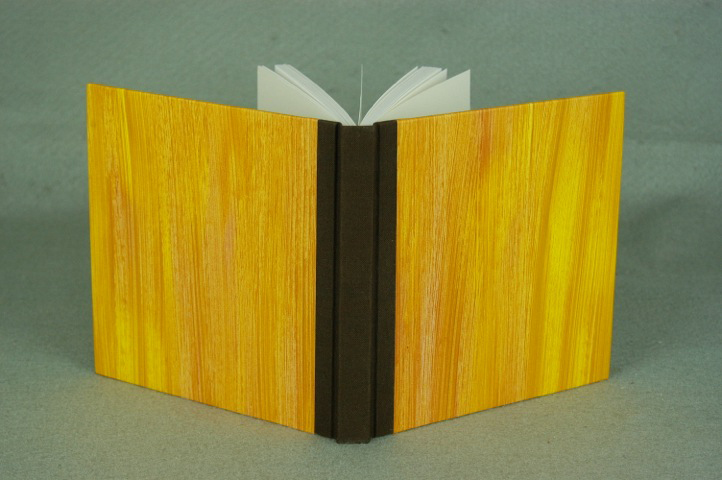
In this introductory bookbinding class students will learn why books look the way they do, a brief history of bookbinding styles, the basics of materials (paper, board, cloth, adhesives), basic techniques (measuring, folding, cutting, sewing, applying adhesive), and how to make a sewn, hardcover book. By the end of this two-day class students will know the parts of a book, how books function, and leave with 1-2 flat-back books covered in cloth and decorative paper.

Join us for a day-long workshop exploring the Coptic book, a historic structure dating from as early as the 2nd century AD developed by early Egyptian Christians, or Copts. The Coptic binding is a non-adhesive, hand-sewn binding method, producing a book that is able to open 360°.

In this introductory class, students will learn the basics of hand typesetting and then print a small edition either individually or collaboratively. Fundamentals of proper presswork including registration, inking, and impression will be covered. Students can expect to complete a small edition of a project such as a business card, greeting card, or a poster.

Dive into the world of digital letterpress by learning the basics of printing from photopolymer plates. At the first class meeting, students will learn how to set up files and order plates. At the second meeting, students will learn the fundamentals of proper presswork including registration, inking, and impression using the tabletop platen presses. Students can expect to complete a small edition of a project such as business cards or greeting cards.
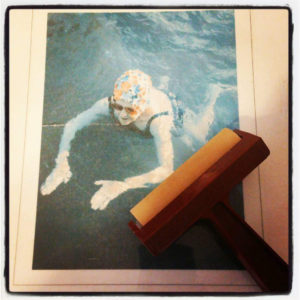
In this 4 hour class students will learn how to take a digital image and print the image on a inkjet printer then transfer the image to watercolor paper using a alcohol-based gel medium (purell hand sanitizer).
The class will explore what types of images work with this process, which is very similar to a polaroid transfer.
Level: This class is appropriate for students at all levels.

Also known as Blackletter or Old English, Gothic is the lettering hand of choice for dramatic impact. It can evoke either medieval and fantasy worlds or the most modern expression of energy. This class will introduce you to the broad-edge pen and teach the simple spacing and construction rules for this distinctive letterform.
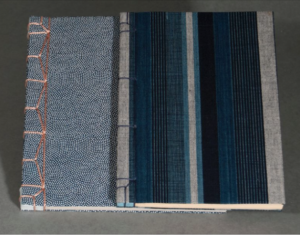
Join us for a fun day long course on Japanese Bookbinding. Students will make two Japanese bound books using fabric and paper covers.
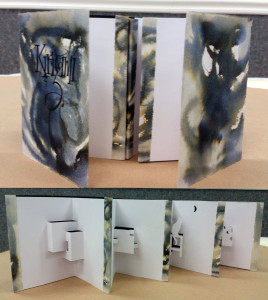
Kirigami is a form of pop-up that uses only one piece of paper to form the cut-out and structure. In this class, students will paint the covers, fold the accordion, and learn to cut and fold kirigami pieces to include in their book. They will learn about the inks used in painting the cover, the cutting tools used, and the intricate cutting and folding techniques required for successful kirigami, as well as troubleshooting mistakes. In addition to using kirigami in books, this technique can also be used for making cards. Paper and kirigami patterns are provided, as well as printed instructions and an extensive list of print and online resources.

Learn the basics of setting type by hand and letterpress printing using the table-top platen press, still widely available on the market. Learn the California job case, set type, use a pica ruler and composing stick, ink the press and print. Proper impression will be covered. Each student will set and print a small edition of his or her own business card or short quote.
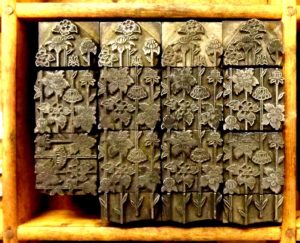
Learn the basics of letterpress printing by designing, illustrating, printing, and binding a poetry chapbook or short story. Students will learn the basics of setting type by hand, as well as incorporating images using photopolymer plates or linoleum blocks. Over 6 weeks, students will design and print a small edition collaboratively. The last evening of class will be spent binding the book using a simple pamphlet binding.

Learn the basics of letterpress printing by collaboratively designing and printing a small edition of a poetry broadside using the technique of hot printing. Pioneered by Hendrick Werkman (1882-1945), hot printing integrates text and image using type-high objects and alternative techniques like pressure printing, blind printing, masking, etc. Students will learn the fundamentals of proper presswork including registration, inking, and impression.

Japanese silk and other commercial book cloths can be beautiful, but have you ever seen a fabric you like and wished you could use it to make your own book cloth? This short class will teach students a quick and successful technique for backing their own fabric. Learn what to do and what not to do, which supplies will end in success and which will almost always guarantee failure. You’ll go home with your own cloth and some sample cards to refer back to when you make more cloth on your own.
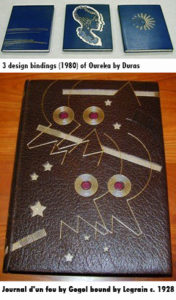
Observe and Imagine –Book Arts at the Ransom Center; Book Mechanics at the Austin Book Arts Center
View wonderful examples of the book arts at the Ransom Center. Art nouveau design bindings by French binders and contemporary design bindings by U.S. binders will be displayed and explained. Inspire your work with the variety of different forms and styles found in design bindings, artists books and private press creations. The morning session of this class will meet at the Ransom Center Denius Room, 2nd floor, from 10 am to noon. We will reconvene at the ABAC from 1:30 to 5:00 to handle and study a variety of (non museum) books to understand how different papers, boards and sewing structures affect how the pages turn. How a book moves profoundly affects the narrative of a book.
Participants are encouraged to bring interesting examples of book structures and personal book art ideas or projects to discuss during the afternoon session.

Explore the colorful and creative world of Book Arts by making paste papers! For hundreds of years paste papers were used by bookbinders as decorative endsheets that added a unique embellishment to the book. But you can create paste papers for an endless variety of applications, including decorative covering for boxes, frames, journals, cards or stationery. Students will learn a bit of the history of paste papers, look at both historical and modern examples, get a lesson on mixing methyl cellulose, and then be set free to create their own set of colorful and unique paste papers.
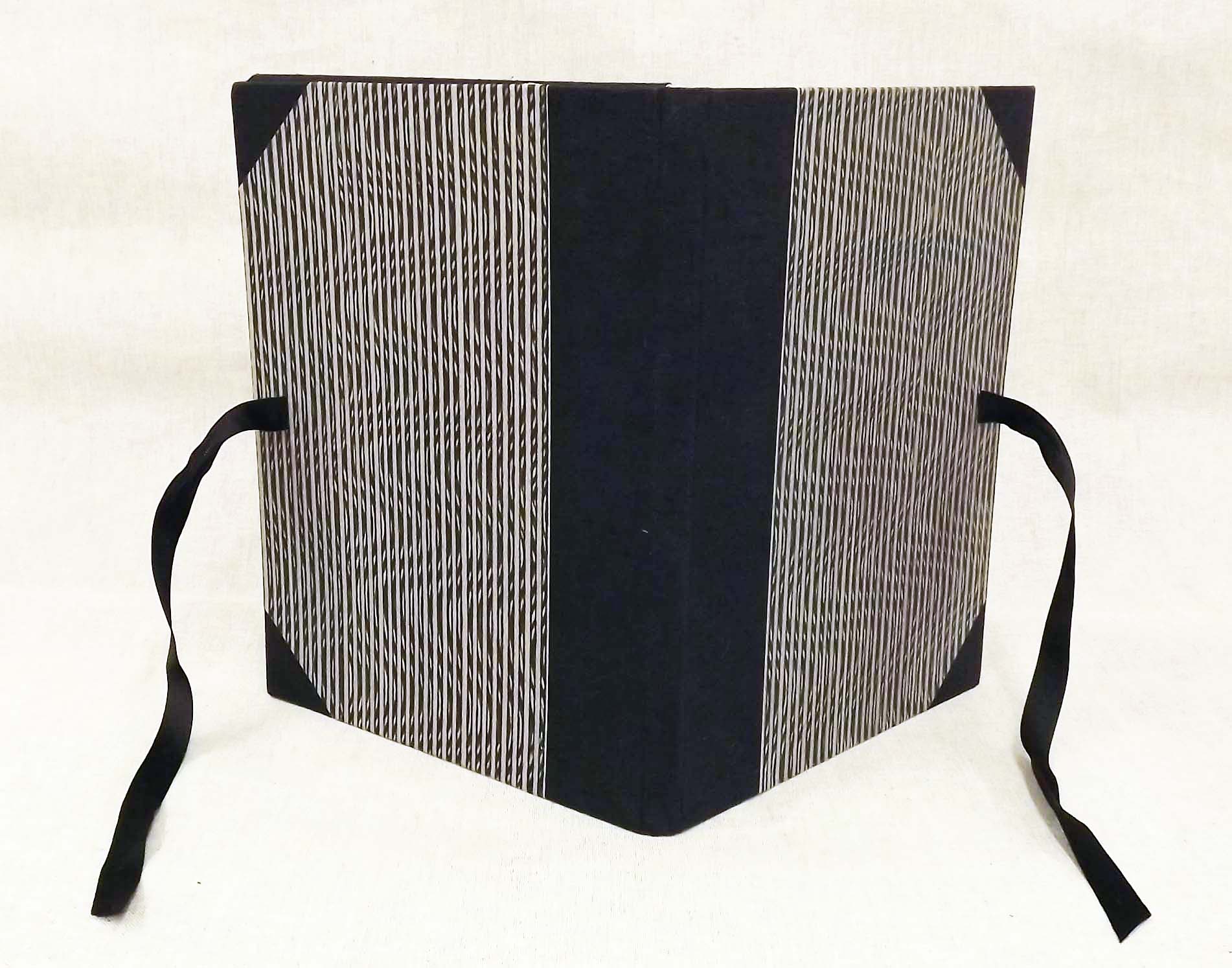
Protect your important documents or art on paper. Each student will learn to make a custom portfolio, and will also learn about tools, materials, and techniques for book arts. Cloth, board, and decorative paper will be provided. This class is appropriate for graphic designers, photographers, fine art printers, or anyone with a document or art work that they want to protect.

Let letterpress be that something special this holiday season! Learn the basics concepts of letterpress printing using wood and metal type and photopolymer plates. The majority of class time will be spent printing a collection of holiday cards on the tabletop platen presses. Students can expect to complete a small edition of cards with greetings such as “Season’s Greetings”, “Happy Holidays” and “Happy New Year”. We may even print “Thank You” cards, ending the year in a spirit of gratitude!

In the first portion of this class, students will learn the basics of the creating and printing a salt print, a nineteenth century photographic process created by Henry Fox Talbot. The second half of the class will be dedicated to learning some basic bookbinding skills by creating a cloth-covered, post screw photo album.
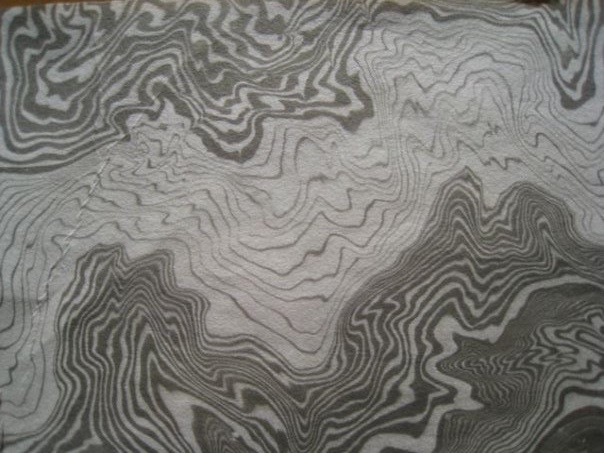
Suminagashi: The Art and Nature of Japanese Paper Marbling
A well-guarded secret for centuries, those attending this class will learn the ancient art of Japanese paper marbling, the older, simpler, and more subtle predecessor to Ebru, Turkish/European marbling. Suminagashi, which means “floating ink,” involves the placement of sumi ink and a dispersant on a tray of water, and then “picking up” the print on Xuan paper. Those attending will gain familiarity with its background and uses, as well as supplies, set-up, and techniques employed. We will focus on traditional suminagashi using black sumi, as well as explore working with colored inks. Together we’ll experience this unique Japanese paper art, and contemplate the inter-being of the natural and the manmade. Please wear comfortable clothes, and bring lunch and a cushion for some brief (optional) meditation. Tea will be served.

Learn hot-stamping techniques that will permit you to create, among other things, beautiful spine labels for your books.

The Longstitch sewing technique makes a great travel journal. The name comes from the long running stitches that go up and down the spine. Not only does this wide spine lay open flat, the five signatures of paper inside give you plenty of room for easy sketching and writing. Our second book will feature a beautiful technique call Tacket Binding. Tacketing is an exposed binding (the thread shows) that dates from the second century A.D. This is a cool detour from the Longstitch and, with your choice of cover paper, design, and stitching materials, your Tacket bound book will be worth the trip. It’s a great way to use up smaller papers and make nice gifts at the same time! If you have something special you want to use in or on your book, be sure to pack it!

Learn some basic bookbinding skills in this one day workshop. Students will create a hard-cover book with pages of watercolor paper. It is an accordion fold construction, so the book opens wide and the pages lay flat, perfect for sketching or using pastels or watercolor.
